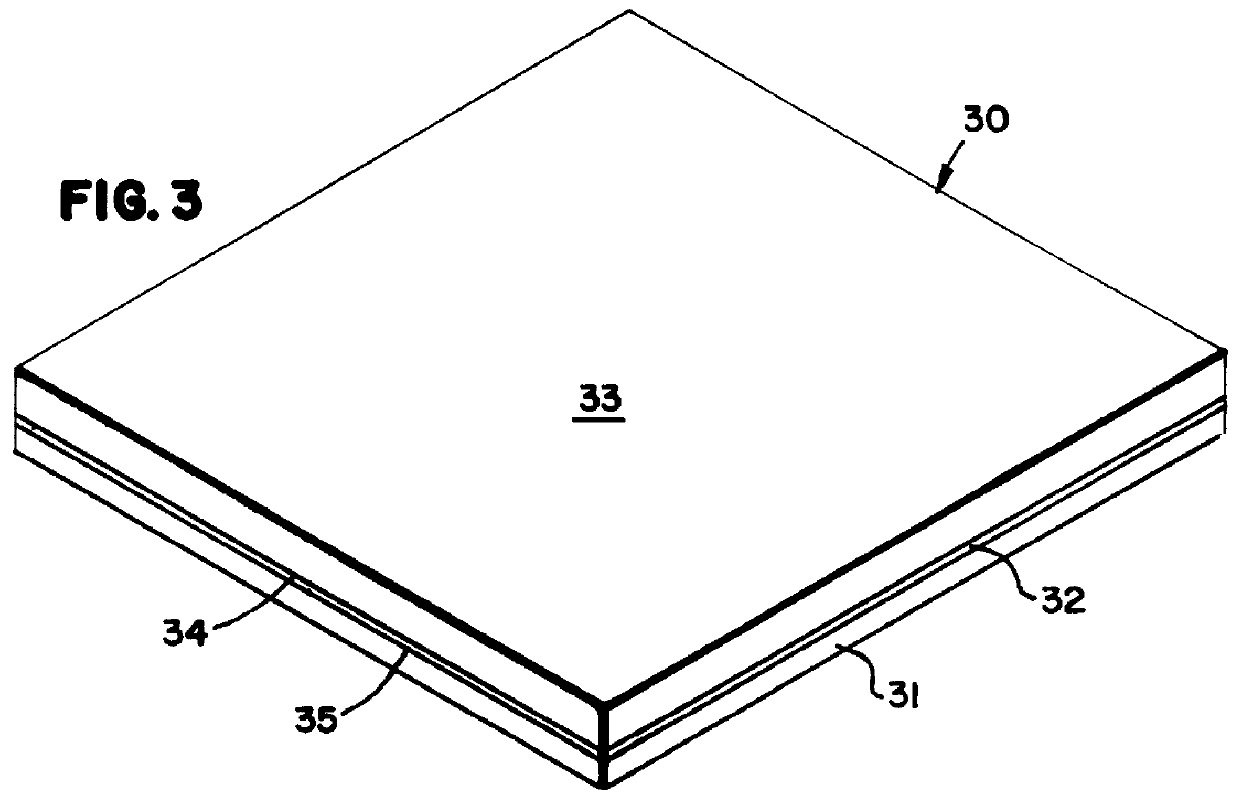Integral membrane layer formed from a photosensitive layer in an imageable photoresist laminate
a technology of photoresist laminate and integrated membrane, which is applied in the direction of auxillary/base layers of photosensitive materials, photosensitive materials, instruments, etc., can solve the problem that the thin integral layer is not inherently removable from the second layer, and achieves the improvement of product quality and processability, easy peeling, and improved layer differentiation
- Summary
- Abstract
- Description
- Claims
- Application Information
AI Technical Summary
Benefits of technology
Problems solved by technology
Method used
Image
Examples
example 1
The following table 1(A) and 1(B) provide formulations for the first relatively thin layer and the second relatively thicker layer.
TABLE 1(B)
The following table 2(A) and 2(B) provide formulations for the first relatively thin layer and the second relatively thicker layer.
TABLE 2(B)
The following table 3(A) and (B) provide formulations for the first relatively thin layer and the second relatively thicker layer.
TABLE 3(B)
The following table 4(A) and 4(B) provide formulations for the first relatively thin layer and the second relatively thicker layer.
TABLE 4(B)
The following table 5(A) and 5(B) provide formulations for the first relatively thin layer and the second relatively thicker layer
TABLE 5(B)
The following table 6(A) and 6(B) provide formulations for the first relatively thin layer and the second relatively thicker layer. The thicker photosensitive layer having pressure sensitive properties.
TABLE 6(B)
The following table 7(A) and 7(B) provide formulations for the first relatively th...
PUM
| Property | Measurement | Unit |
|---|---|---|
| Length | aaaaa | aaaaa |
| Thickness | aaaaa | aaaaa |
| Thickness | aaaaa | aaaaa |
Abstract
Description
Claims
Application Information
 Login to View More
Login to View More - R&D
- Intellectual Property
- Life Sciences
- Materials
- Tech Scout
- Unparalleled Data Quality
- Higher Quality Content
- 60% Fewer Hallucinations
Browse by: Latest US Patents, China's latest patents, Technical Efficacy Thesaurus, Application Domain, Technology Topic, Popular Technical Reports.
© 2025 PatSnap. All rights reserved.Legal|Privacy policy|Modern Slavery Act Transparency Statement|Sitemap|About US| Contact US: help@patsnap.com



